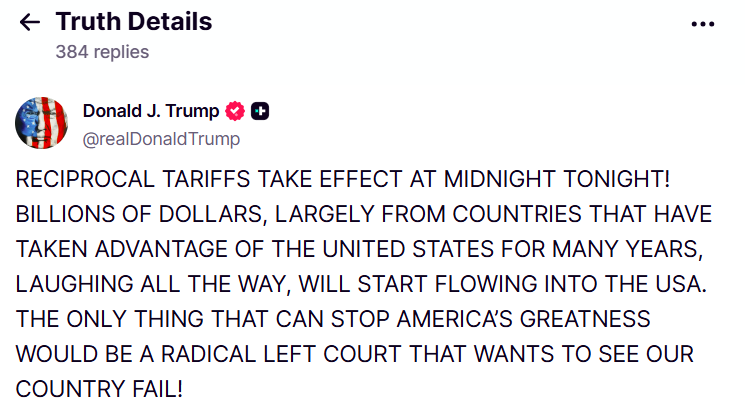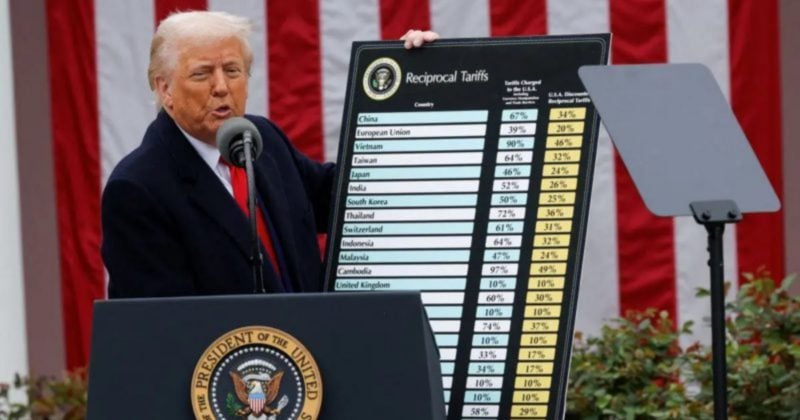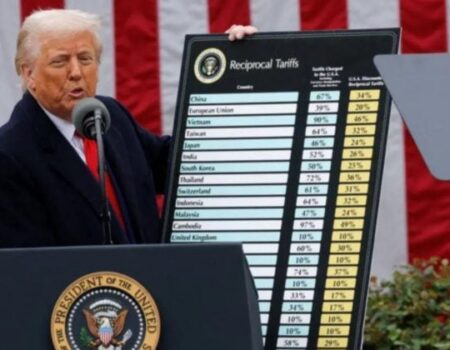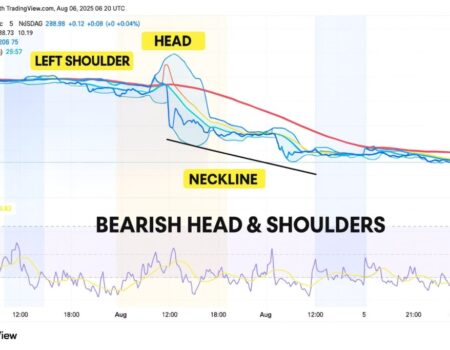Key Takeaways
- Trump’s administration implemented reciprocal tariffs with rates varying by country, impacting trade with major partners.
- A new 40% transshipment tariff and suspension of duty-free de minimis imports are part of the policy escalation.
Share this article
President Donald Trump announced late Wednesday that reciprocal tariffs on foreign nations would take effect at midnight.

The trade measures, Trump claimed, would channel billions of revenue into the US economy. He believes those funds were previously lost to countries that had “taken advantage” of America for many years.
“The only thing that can stop America’s greatness would be a radical left court that wants to see our country fail!” Trump wrote on Truth Social.
According to an update from Gibson Dunn, the tariffs include country-specific rates ranging from 10% to 41%, with notable rates including 25% for India, 19% for Indonesia and the Philippines, and 15% for Japan and South Korea.
The European Union secured a two-tiered structure, with zero tariffs on goods that already face duties of over 15%.
Trump has imposed steeper tariffs on Indian goods due to India’s continued purchase of Russian oil. On Wednesday, he issued an executive order adding a 25% tariff on imports from India on top of an existing 25% tariff, making the total tariff rate on many Indian goods 50%. This hike is one of the highest rates the US has imposed on a trading partner.
The tariffs have sparked legal challenges in US courts, with plaintiffs arguing that the president lacks authority to impose duties under emergency powers. While lower courts initially blocked the measures, a stay pending appeal has kept them in effect.
The administration claims the tariffs will redirect trade flows and address deficits, generating about 5% of federal revenue. However, economists warn that the measures could slow GDP growth.
Share this article







No Comment! Be the first one.